he White House and the Vatican had never been further apart then they were under the parallel leaderships of President Donald Trump and the late Pope Francis, who died on Monday at the age of 88.
Despite once seeing shades of himself in the pontiff, Trump’s relationship with Francis has been characterized by a decade of tension.
Francis, who was praised by Trump as “a humble man, very much like me” when his papacy began in 2013, has widely been considered one of the most progressive popes in modern history. His legacy is starkly different from that of the Republican president who has remade modern conservatism not just at home, but around the world.
“The rise of Donald Trump in national politics coincided exactly with Pope Francis’ visit to the United States,” Massimo Faggioli, church historian and Villanova University professor, told Newsweek.
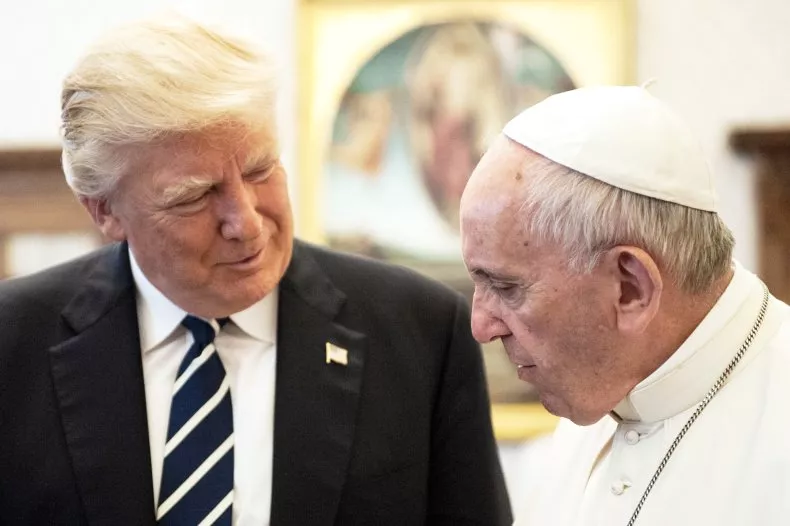
Francis’ first state visit to America—which included a stop at St. Patrick’s Cathedral in New York City—took place in September 2015, just three months after Trump descended the golden escalator at his namesake building five blocks away to announce his long-shot presidential candidacy.
During that visit, Francis made several progressive statements on hot-button issues like immigration, climate change, social justice and compassion for LGBTQ+ individuals.
Francis’ groundbreaking trip and the beginning of Trump’s political career would foreshadow a complicated relationship between the two men.

In a striking continuation of their long-standing ideological clash, Pope Francis and former President Donald Trump are once again at odds—this time over Trump’s proposed immigration policies. Their rift, which dates back to February 2016, was reignited recently when the pope issued a strong warning to U.S. bishops about the dangers of the Trump administration’s plans for mass deportations.
Francis’ letter described the proposed immigration crackdown as a moral and humanitarian misstep that would “end badly,” and urged American Catholic leaders to advocate for compassion and dignity for migrants. The message was interpreted as a clear condemnation of Trump’s approach, which emphasizes strict border enforcement and aggressive deportation.
The latest rebuke from the pontiff came almost exactly nine years after he first publicly criticized Trump for his border wall proposal, stating that “a person who thinks only about building walls, wherever they may be, and not building bridges, is not Christian.” Trump responded at the time with characteristic defiance, suggesting the pope would regret those words if the Vatican were ever attacked by ISIS.
Adding to the latest controversy, Pope Francis’ letter also singled out Vice President JD Vance. A Catholic convert who was raised in a conservative evangelical Protestant household, Vance has been one of the administration’s most vocal supporters of stricter immigration enforcement. The pope’s criticism underscores a growing divide between some U.S. political leaders and the global Catholic Church on matters of human rights and social justice.
This renewed clash between religious values and political policy sets the stage for deeper tensions as the 2025 election season intensifies.
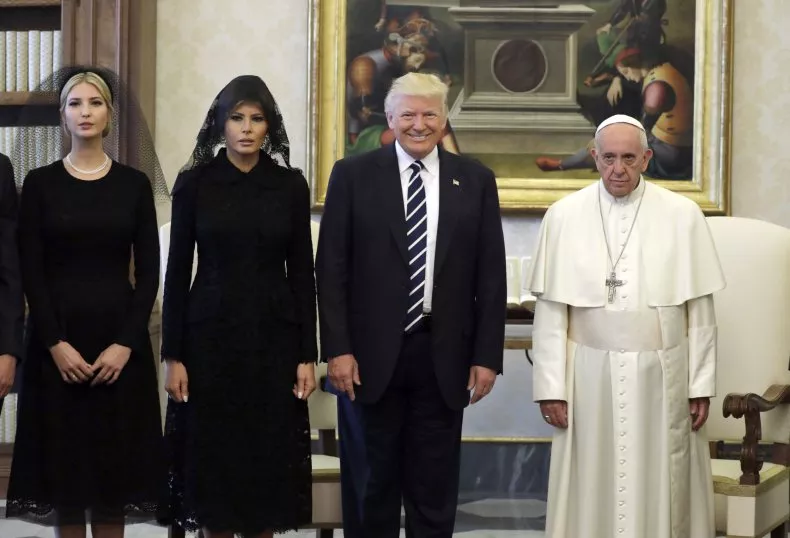
David Lantigua, the co-director of the Cushwa Center for the Study of American Catholicism and an associate theology professor at the University of Notre Dame, told Newsweek that the Catholic Church sees the second Trump administration’s immigration crackdown as “even more egregious” than the first.
“With threats of mass deportation, the U.S. Bishops have already sued the current administration for cutting support of its refugee resettlement program,” Lantigua said.
Despite Francis’ initial criticisms of Trump during the 2016 election cycle, the pope and the president met face-to-face for the first time at the Vatican in 2017.
The meeting, which lasted about 30 minutes, appeared to be cordial despite their conflicting views. The two exchanged customary gifts, with Francis presenting Trump with an emblem of an olive tree that symbolized peace and copies of his his writings, while the president presented the pope with a collection of books by civil rights icon Martin Luther King Jr.
But photos from the meeting went viral, with many observers theorizing that Francis, who stood solemnly next to a grinning Trump, did not want to meet with the president.
As they shook hands in farewell, Trump told the pope: “I won’t forget what you said.” Asked about their discussion by Italian President Sergio Mattarella, Trump said Francis “is something” and relayed that the pair “had a fantastic meeting,”
“Honor of a lifetime to meet His Holiness Pope Francis. I leave the Vatican more determined than ever to pursue PEACE in our world,” Trump wrote on Twitter on May 24, 2017.
Hours before Trump was inaugurated back into the White House in January 2025, Francis sent a message to the incoming president, wishing prosperity for the U.S., which he described as “a land of opportunity and welcome for all,” and asking Trump “to build a more just society, where there is no room for hatred, discrimination or exclusion.”
Faggioli told Newsweek that the tension that existed between Trump and the pope had less to do with Francis’ progressivism, and more to do with his background as a Jesuit from Latin America.
“It comes from a Catholic culture that is very critical of American power in the world,” he said, pointing out that Francis had also objected to Vice President Kamala Harris‘ views during the 2024 election. Francis had criticized Harris, saying there was little difference between a person who wants to deport migrants and one who advocates for access to abortion.
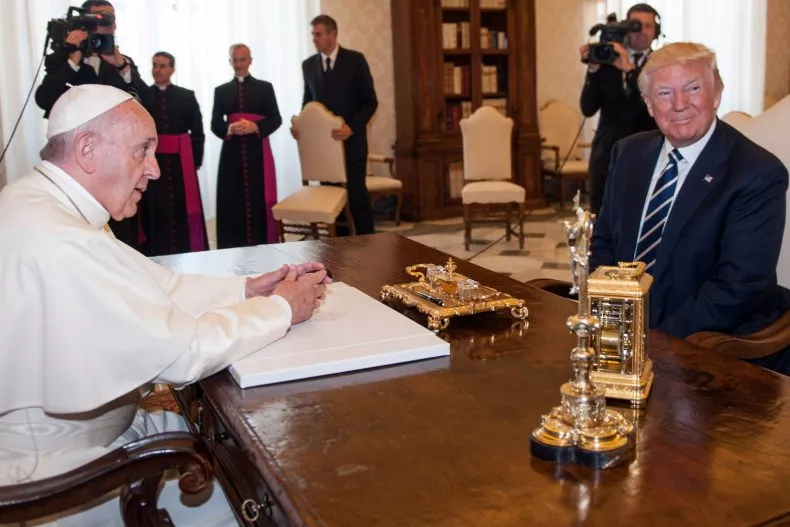
“There [was] a fundamental objection coming from Pope Francis to certain aspects of American power that are much more extreme,” Faggioli said. “America is the world’s superpower, economically, and the Vatican, especially [during Francis’ pontificate], has taken a position in favor of the other side of world.”
Faggioli added that Trump’s ambassador to the Holy See didn’t help much to repair the bond between Trump and Francis in the pope’s final days. The president nominated a sharp papal critic to serve as his representative to the Vatican in December, tapping Brian Burch, the president of the political advocacy group CatholicVote.org.
Burch previously said the pope’s 2023 decision allowing priests to bless individuals in same-sex unions created “confusion” within the church. The ambassador also predicted that the pontiff would not be in office much longer and characterized Francis’ leadership as having a “pattern of vindictiveness.”
“The U.S. Ambassador to the Holy See is a person whose profile is not exactly the one of mediator or of a diplomat—just the opposite,” Faggioli said.
He added that the Vatican will be closely watching how Trump is affecting the transatlantic alliance between the U.S. and Europe, because that will also evolve America’s relationship with the Catholic Church.
“It’s very hard to imagine that an America that goes without Europe can maintain the same relationship with the Vatican,” Faggioli said. “They’re different things but not easily separable.”

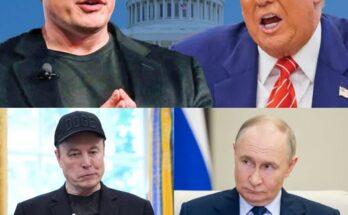
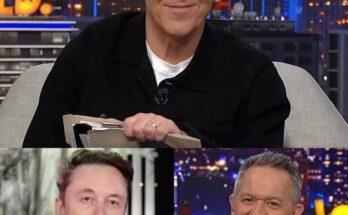
Good https://is.gd/tpjNyL
Very good https://shorturl.at/2breu